
Basic sanitation with Urine Diverting Dry Toilets (UDDT)
Project services:
Consulting and Institutional Strengthening for utitility and disposal companies
Integrated treatment and disposal concepts. Establishment of models, including tariffs, for sanitation services in areas without sewerage network.
Planning and construction supervision. Workshops, classes and information for users and disposal companies.
The project has been realized in collaboration with GIZ under PROAGUA.
Result:
Development of equipment for hygienic dry toilets.
Functional modules with individual design options.
User participation, education of decision makers
Adapted concepts, including tariffs, for sanitation services in areas without sewerage network.
Video:
Dry Sanitation Peru
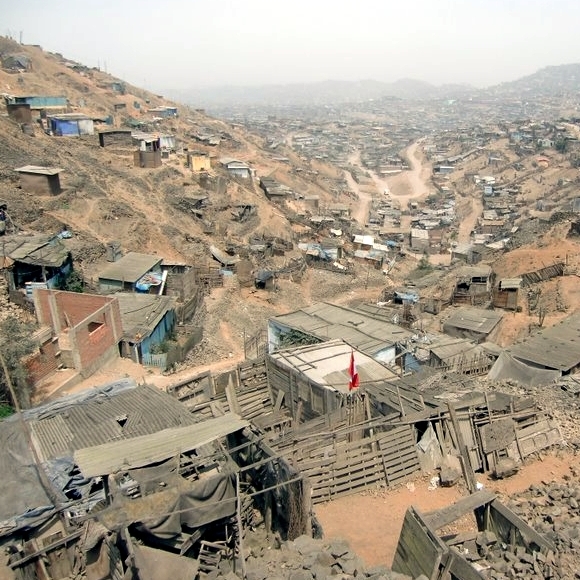
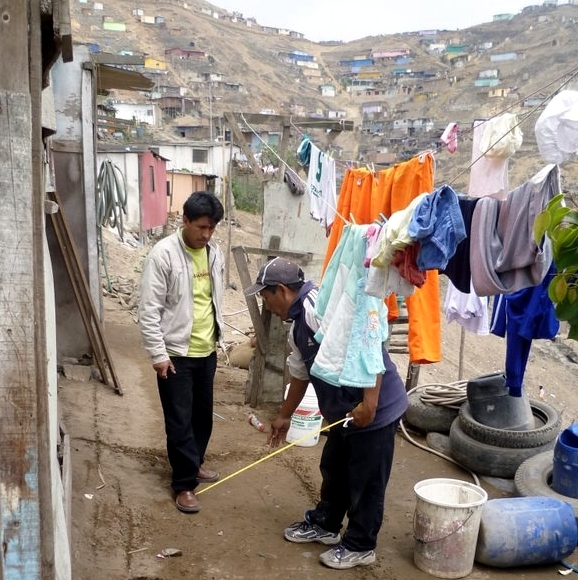
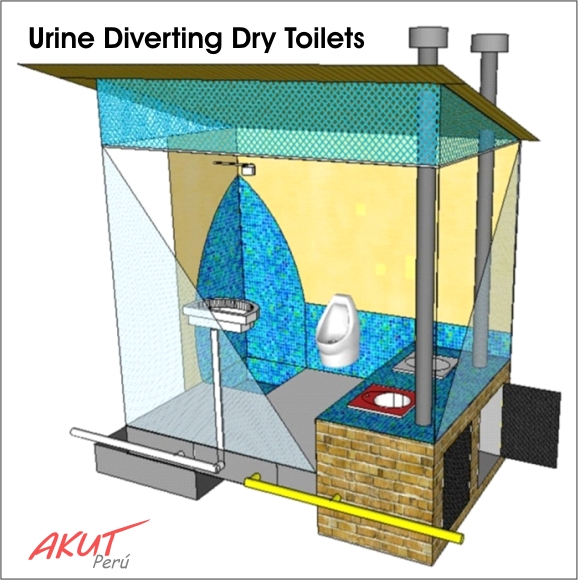
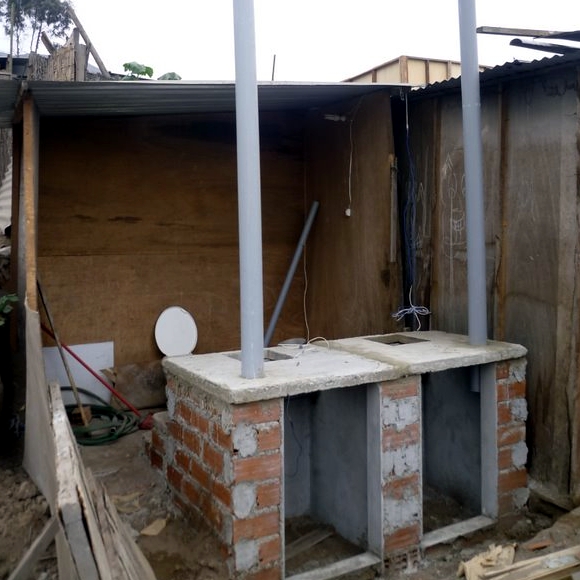
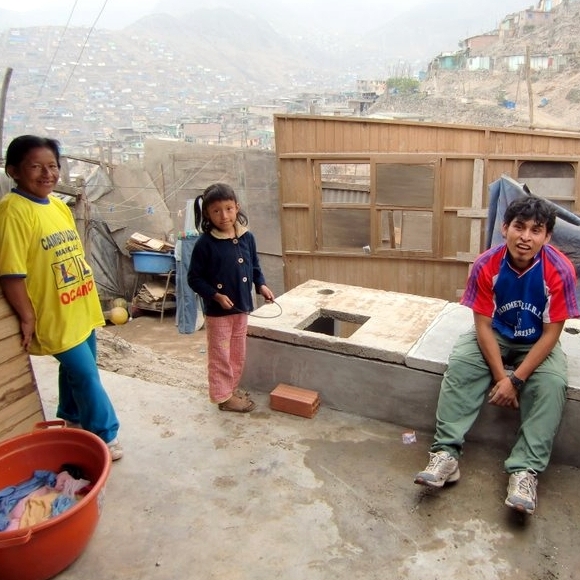
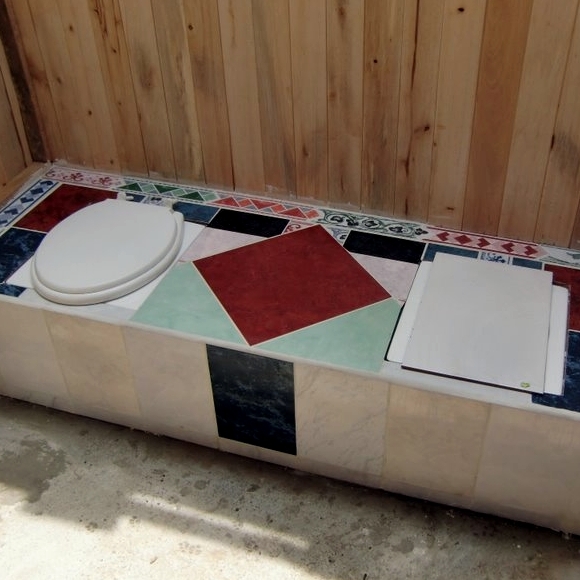
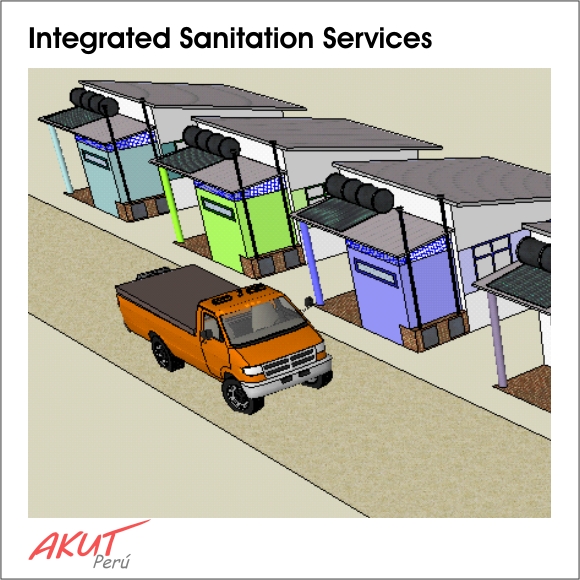
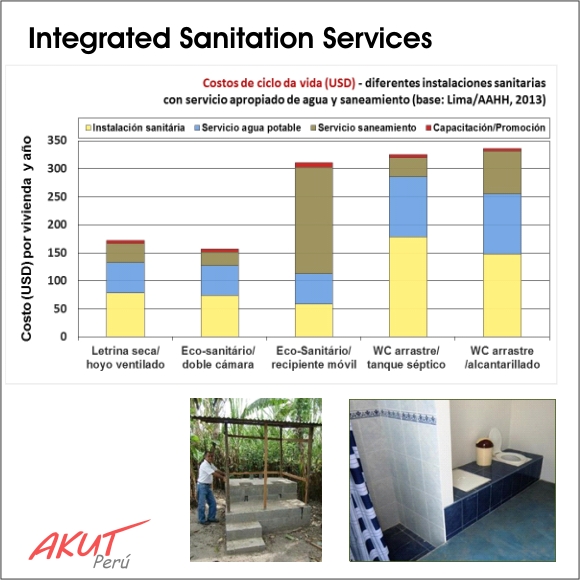
Challenge:
In Peru 30 to 40% of the population does not have access to adequate sanitary facilities and sanitation services. Resulting problems especially occur in the rapidly growing peri-urban areas with relatively dense populations. Very basic pit latrines without any hygienic standard are often built far away from the houses so that many people, in particular women and children, avoid using it. These latrines usually cannot be emptied and new ones have to be constructed once they are filled. In addition, uncovered pits and abandoned latrines create serious public risks.
In this situation urine diversion dry toilets (UDDT) with twin vault systems offer decisive advantages. They provide access to hygienic toilets, which can be installed inside/next to a house, just like a bathroom, with shower or washing place. User acceptance is high, because it is a permanent solution: if both vaults are full they can be emptied easily and are then ready for continued operation
The complete separation of the source streams (urine, faeces and greywater) corresponds to the ecological sanitation (ECOSAN) approach and the on-site drying of the fecal material in the vaults allows a low risk handling of fecal material.
Altogether, from erection of the system up to final treatment and disposal of the fecal material, this system has very low lifecycle costs .
Solution:
The organized construction of urine diverting dry toilets (UDDT, twin vault system) enables public utilities to offer an adequate, economic and flexible adaptable onsite sanitation service for the first time in neighbourhoods without sewage network connection and insufficient water supply services.
The final destination of the UDDT products (dry faeces, urine and greywater) has to be decided at the beginning of the planning stage. Each service model has to be designed depending on the specific conditions: if private management and final treatment or utilization of the products are possible and desired, the user should be instructed and supported. However, in most of the concerned peri-urban areas the supervized collection, removal and (re)utilization of fecal material is required. This allows post-treatment, for example, in municipal composting.
For example, the public utility of the city Juliaca has designed a service concept based on UDDT installation for a settlement with 750 houses, where the collection of dry fecal material is intended in 6-month intervals. Since high groundwater levels do not allow infiltration, the service has to include monthly urine collection and treatment in the municipal wastewater treatment plant, whilst greywater is to be treated in 7 constructed wetlands. The calculated monthly tariff for the total service per household (without investment) is $ 2.70. Benefits of this alternative sanitation concept "on-the-wheels" are a significantly increased comfort and improved hygienic conditions for connected households.